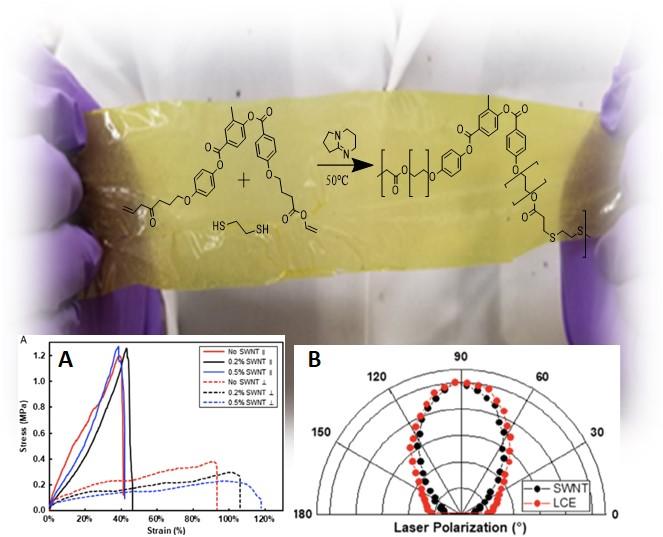
Scientific Achievement
Aligned single-walled carbon nanotubes (SWCNTs) added to liquid crystal elastomers (LCE) demonstrate ~18% strain electrostrictive response, converting molecular motion to macroscale movement.
Significance and Impact
Large-scale synthesis under mild conditions yields 94% of nanocomposite liquid crystal elastomer (n-LCE) with a molecular weight of 20 000 Da (PDI =1.7) hereby overcoming issues with scalability.
Research Details
- n-LCEs were prepared via photo-crosslinking of a liquid crystalline oligomeric (LCO) mixture containing SWCNTs.
- The SWCNT composites contract over 4% against a 140 kPa load, which is above the blocking force of many natural muscle tissues at ambient conditions and suggests that n-LCE nanocomposites are a promising material for soft robotics.
T. Guin, H. E. Hinton, E. Burgeson, C. C. Bowland, L. T. Kearney, Y. Li, I. Ivanov, N. A. Nguyen, and A. K. Naskar, "Tunable Electromechanical Liquid Crystal Elastomer Actuators," Adv. Intell. Syst. 2, 2000022 (2020). DOI: 10.1002/aisy.202000022


